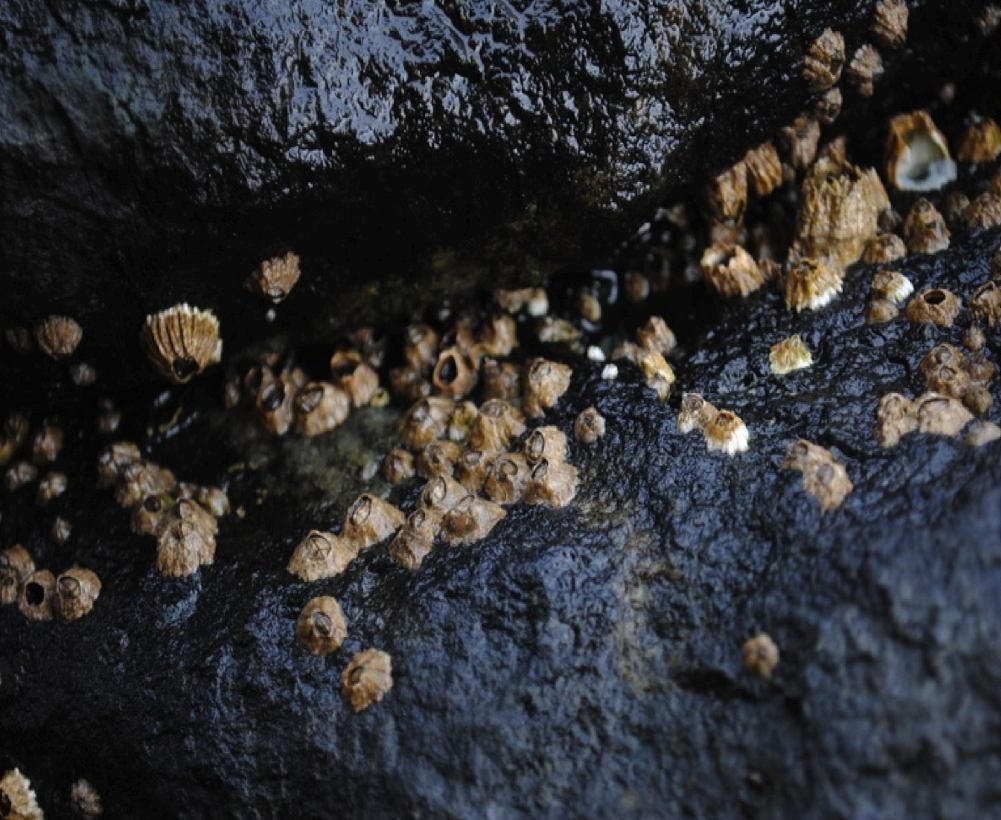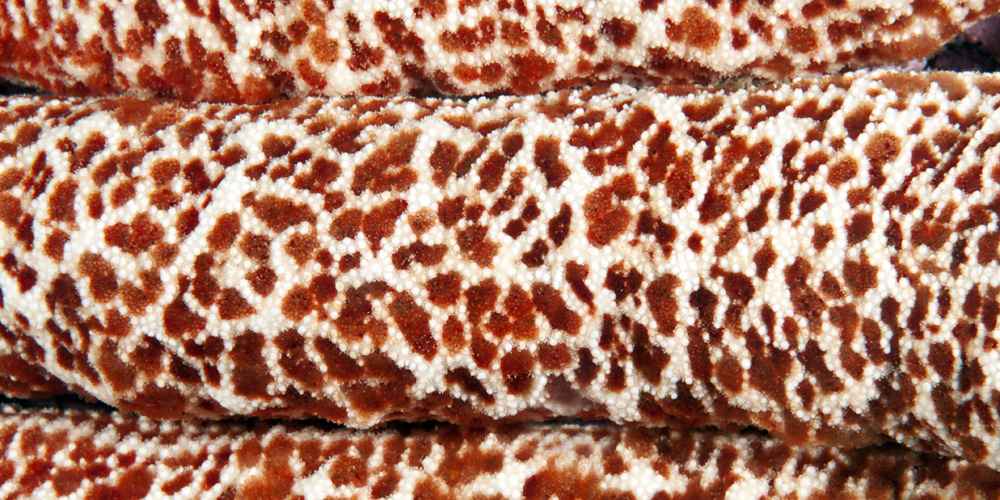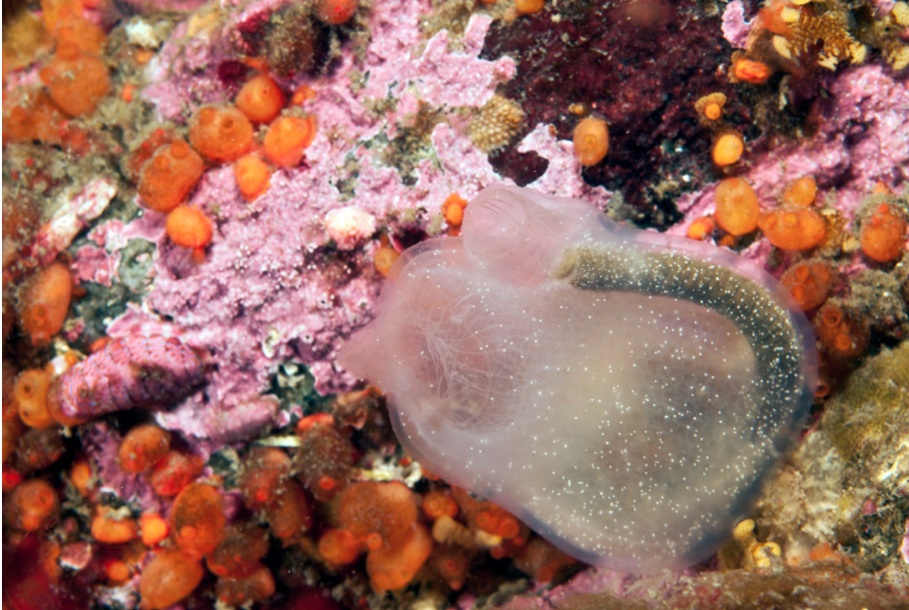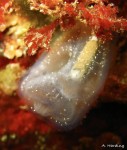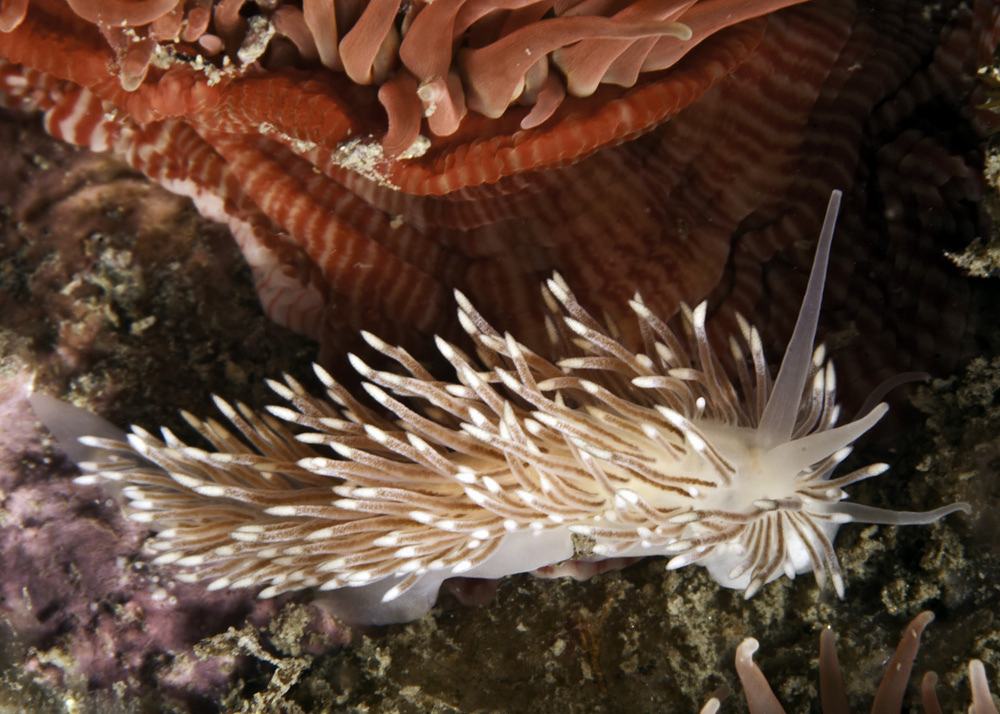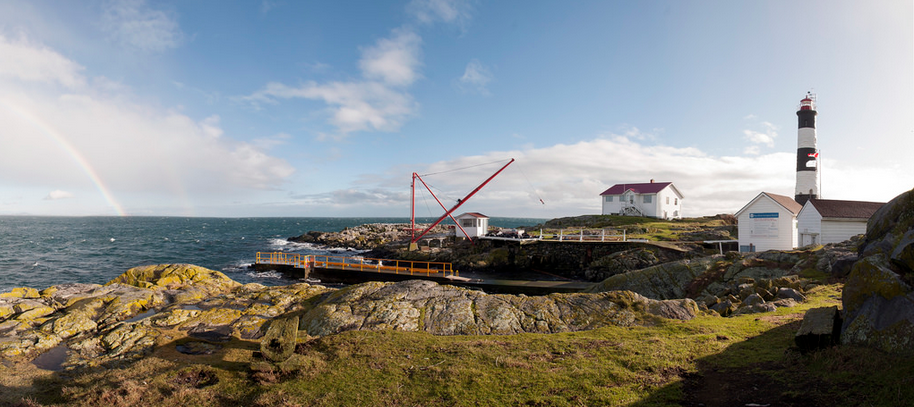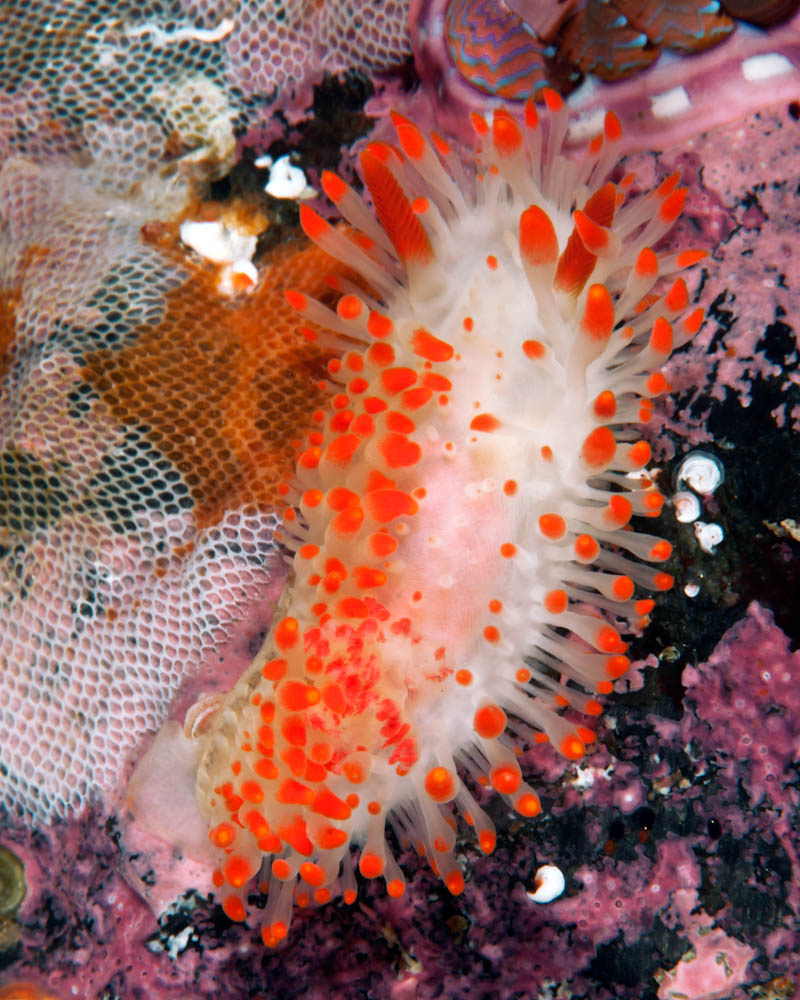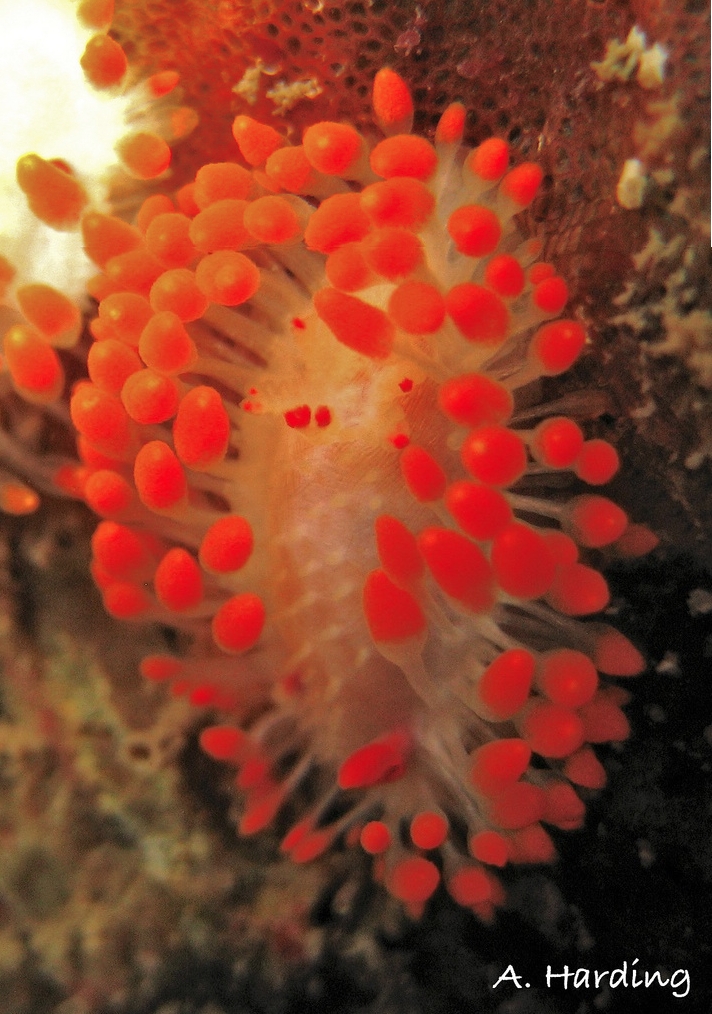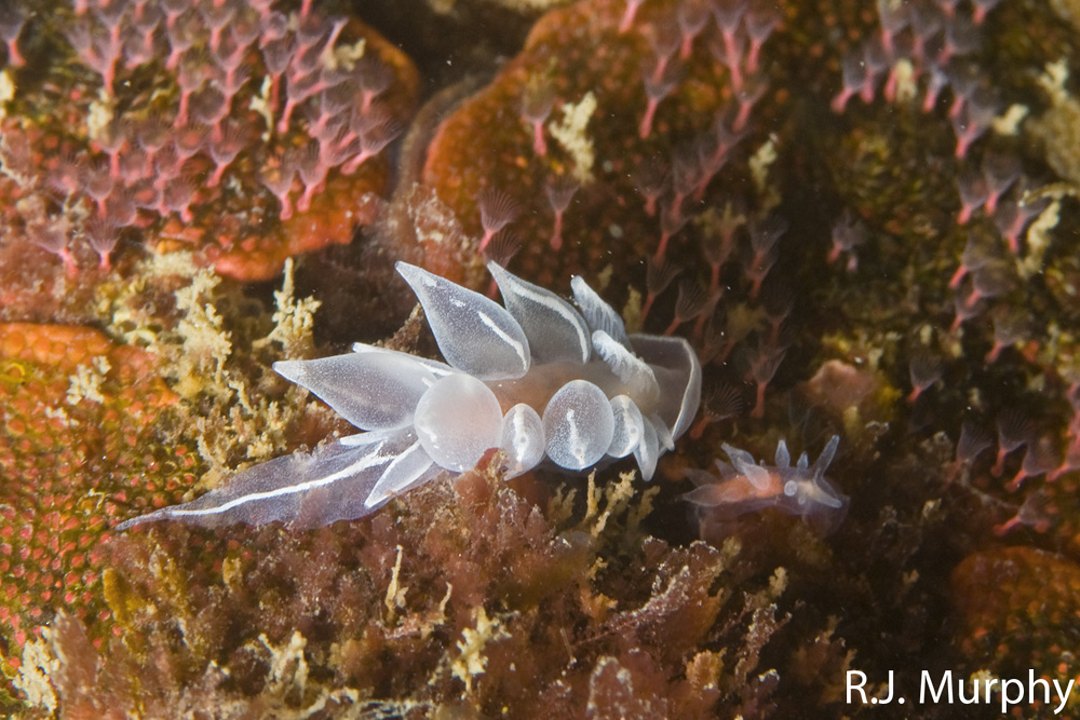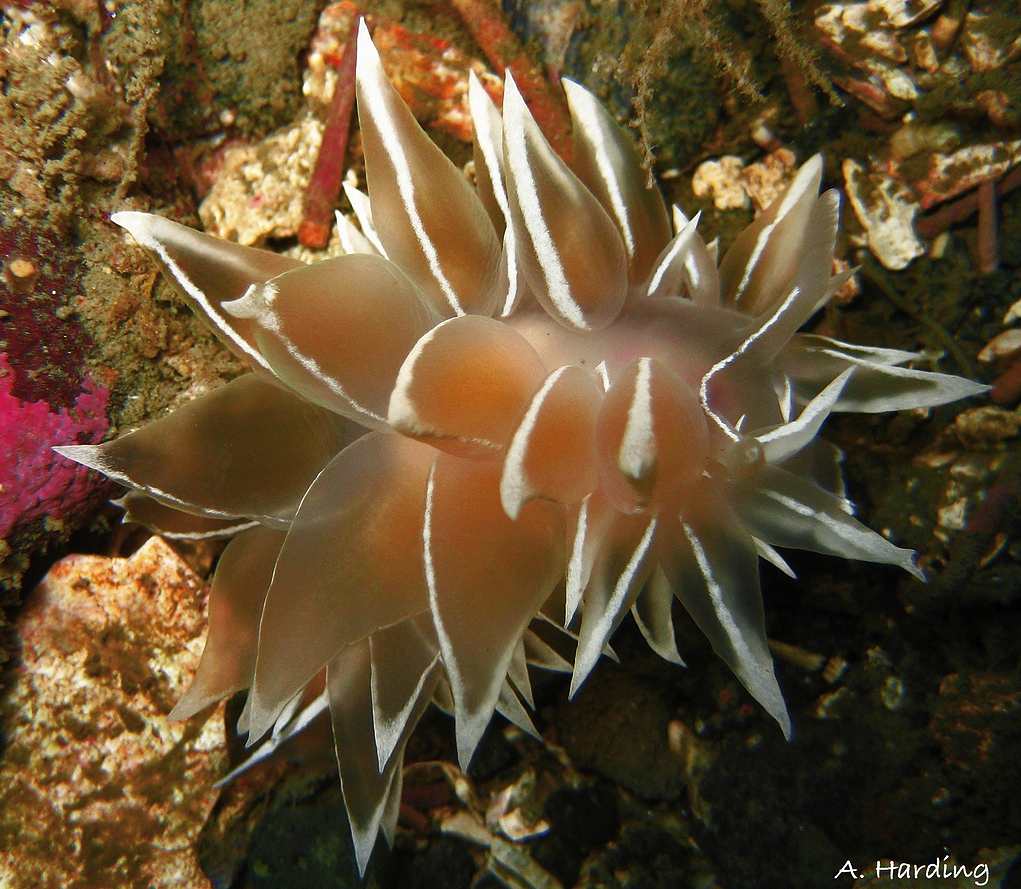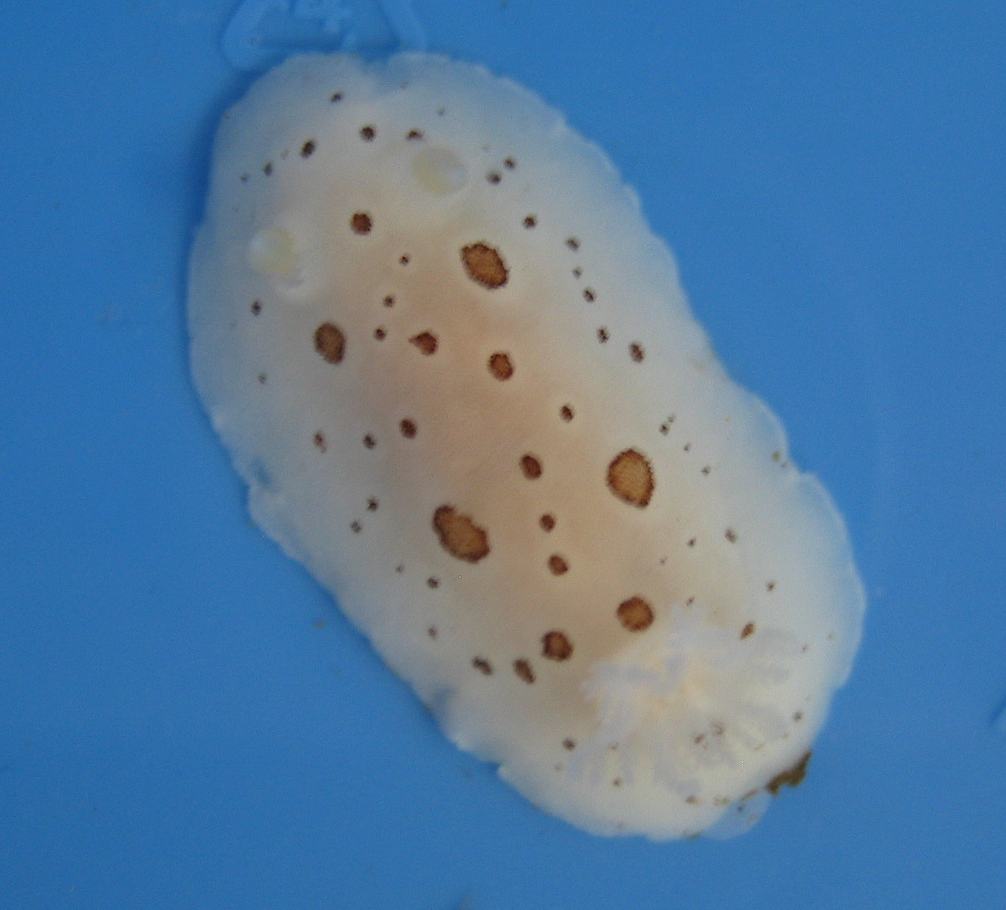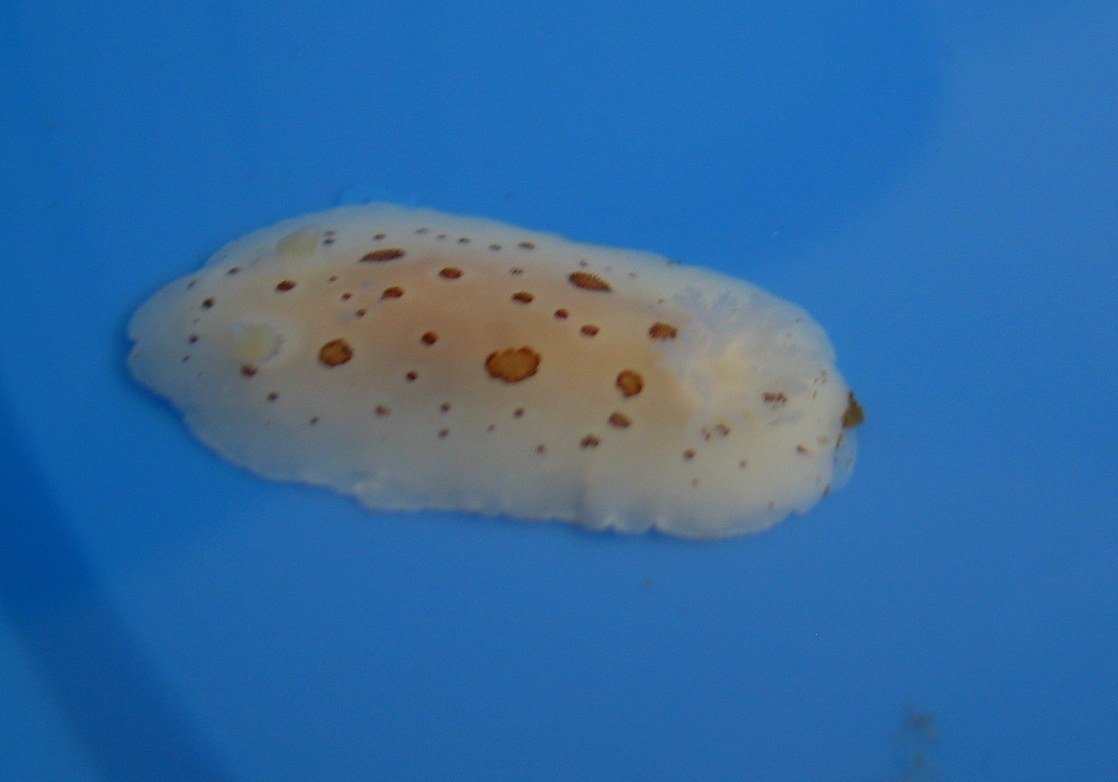Garry Fletcher went with Phil and Marilyn Lambert and Peter McAuliffe to Race Rocks for The Metchosin Bioblitz 2011. Most of the marine Algae and Invertebrates recorded came from Phil’s list. http://metchosinbiodiversity.com/2011results.php
Category Archives: Invertebrate
Chthamalus dalli: small Northern barnacle– The Race Rocks Taxonomy
Chthamalus dalli in the Intertidal zone at Race Rocks
Physical description:
-Size: Reaches a diameter of only 8 mm (0.3 inches)
Colour: Gray, brown
Shape: It looks like a big brown barnacle but the main the difference is the size – it is much smaller
Texture: They do not have ridges
Geographical range: Alaska to San Diego
Habitat: Intertidal and splash zones but also it can occasionally be seen at lower levels
Feeding: Filter feeders on microplankton
Predators: Predatory snails including Nucella ostrina and sea stars such as Leptasterias. If predators are prevalent, Chthamalus dalli will sometimes grow a slight curve on its shell to protect itself.
Reproduction: They are hermaphroditic and produce sperm and eggs simultaneously. They do not self-fertilize, instead they use their long penis (4.5 cm from the shell) to fertilize another barnacle. Life span: About 3 years
Behaviour: It may spend more than half of its life out of the water because it can live in high intertidal levels
Domain Eukarya
Kingdom Animalia
Phylum Arthropoda
Class Cirripedia
Order Thoracica
Family Chthamalidae
Genus Chthamalus
Species dalli
Common Name: small northern barnacle
References:
http://zipcodezoo.com/Animals/B/Balanus_glandula/
http://beachwatchers.wsu.edu/ezidweb/animals/Chthamalus.htm
| Other Members of the Phylum Arthropoda at Race Rocks |
and Image File |
 The Race Rocks taxonomy is a collaborative venture originally started with the Biology and Environmental Systems students of Lester Pearson College UWC. It now also has contributions added by Faculty, Staff, Volunteers and Observers on the remote control webcams. The Race Rocks taxonomy is a collaborative venture originally started with the Biology and Environmental Systems students of Lester Pearson College UWC. It now also has contributions added by Faculty, Staff, Volunteers and Observers on the remote control webcams.
Alessandra Bustamante Concha-Fernández, Peru ( PC yr 37) |
Evasterias troschellii: Mottled Star
Domain Eukarya
Kingdom Animalia
Phylum Echinodermata
Class Asteroidea
Order Forcipulatida
SuborderAsteriadina
Family Asteriidae
Genus Evasterias
Species troschellii
Common Name: Mottled Star)
Recently Russian Scientists researching two other members of the genus, Evasterias , discovered of new steroid compounds.
Steroid compounds from two Pacific starfish of the genus Evasterias
E. V. Levina, A. I. Kalinovsky and P. V. Dmitrenok
QUOTE from Pub-med
.
Jan-Feb 2009;35(1):134-41.
doi: 10.1134/s1068162009010166.
“Abstract
Three new steroid glycosides (evasteriosides C, D, and E), along with six known compounds, were isolated from two Pacific starfish of the genus Evasterias. Evasterioside C from E. retifera collected from the Sea of Japan was identified as (20R,22E)-3-O-(beta-D-xylopyranosyl)-24-nor-5alpha-cholest-22-ene-3beta,6beta,8,15alpha,26-pentaol 26-sulfate sodium salt. The structures of evasterioside D and E from E. echinosoma (collected from the Gulf of Shelichov, the Sea of Okhotsk) were established as (20R,24S)-24-O-(beta-D-glucopyranosyl)-5alpha-cholestane-3beta,6alpha,8,15beta,24-pentaol and (20R,24S)-3,24-di-O-(beta-D-xylopyranosyl)-cholest-4-ene-3beta,6beta,8,15alpha,24-pentaol, respectively. In addition, the known compounds pycnopodiosides A and C, luridoside A, 5alpha-cholestane-3beta,6alpha,8,15beta,16beta,26-hexaol, 5alpha-cholestane-3beta,6alpha,8,15beta,24-pentaol 24-sulfate sodium salt, and marthasterone sulfate sodium salt were identified in E. echinosoma. The structures of the isolated compounds were established on the basis of spectroscopic analyses using 1D and 2D NMR techniques, mass spectrometry, and some chemical transformations.
Similar articles
-
[Steroid compounds from far Eastern starfishes Henricia aspera and H. tumida].
Bioorg Khim. 2005 Sep-Oct;31(5):519-27. doi: 10.1007/s11171-005-0064-y.PMID: 16245695 Russian. -
[Polyhydroxylated steroid compounds from the Far Eastern starfish Distolasterias nipon].
Bioorg Khim. 2008 Jan-Feb;34(1):129-35. doi: 10.1134/s1068162008010160.PMID: 18365748 Russian. -
J Nat Prod. 2005 Oct;68(10):1541-4. doi: 10.1021/np049610t.PMID: 16252922
-
Bioorg Khim. 2010 Mar-Apr;36(2):251-8. doi: 10.1134/s1068162010020135.PMID: 20531484 Russian.
-
Bioorg Khim. 2007 May-Jun;33(3):357-64.PMID: 17682393 Russian.
| Other Members of the Phylum Echinodermata at Race Rocks |
and Image File |
 The Race Rocks taxonomy is a collaborative venture originally started with the Biology and Environmental Systems students of Lester Pearson College UWC. It now also has contributions added by Faculty, Staff, Volunteers and Observers on the remote control webcams. Ryan Murphy, 2011 The Race Rocks taxonomy is a collaborative venture originally started with the Biology and Environmental Systems students of Lester Pearson College UWC. It now also has contributions added by Faculty, Staff, Volunteers and Observers on the remote control webcams. Ryan Murphy, 2011
|
Corella willmeriana: Tansparent sea squirt–The Race Rocks Taxonomy
Ryan took this picture of Corella underwater at Race Rocks. Note inside intestine and other internal organs.
From Wikipedia:
“Reproduction and Development
Hermaphroditic; ‘Corella willmeriana‘ breeds throughout the year. The eggs are fertilized in the atrial chamber, where they develop in to the free-swimming tadpole stage before released. Swimming larvae remain juveniles for <2 days before anterior adhesive organs allow for attachment to substratum. This triggers metamorphism, which entails enlargement of pharynx for filter feeding; the notochord is sucked back into body and is no longer present in adult form.”
- Images by Adam Harding, 2011
| Domain | Eukarya |
| Kingdom | Animalia |
| Phylum | Urochordata |
| Class | Ascidiacea |
| Order | Phlebobranchia |
| Family | Corellidae |
| Genus | Corella |
| Species | willmeriana (Herdman, 1898) |
| Common Name: | transparent sea squirt |
| Other Members of the Subphylum Urochordata underwater at Race Rocks < |
and Image File |
 The Race Rocks taxonomy is a collaborative venture originally started with the Biology and Environmental Systems students of Lester Pearson College UWC. It now also has contributions added by Faculty, Staff, Volunteers and Observers on the remote control webcams. The Race Rocks taxonomy is a collaborative venture originally started with the Biology and Environmental Systems students of Lester Pearson College UWC. It now also has contributions added by Faculty, Staff, Volunteers and Observers on the remote control webcams. |
Granulina margaritula: Pear-shaped margaritula– The Race Rocks taxonomy
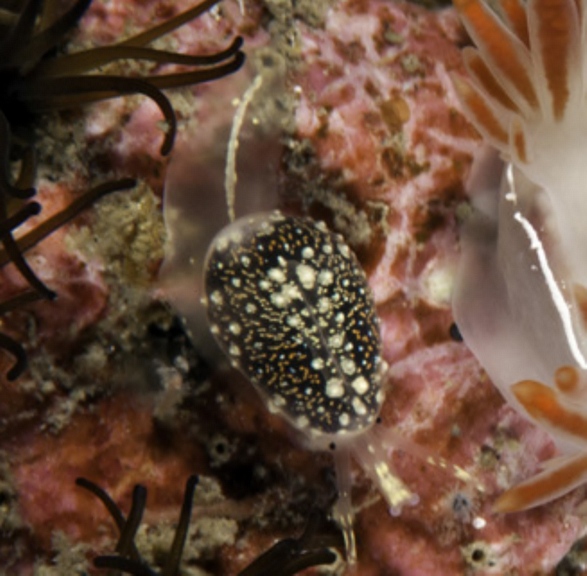 Granulina margaritula the “Little Pearl” is a prosobranch gastropod belonging to the Marginellidae family that ranges from Southern Alaska to Panama. The bright colouration shown in this photo comes from the animal’s “mantle” which is an extension of the “dorsal body”. The epidermis of the mantle can secrete CaCO3 to create a shell.
Granulina margaritula the “Little Pearl” is a prosobranch gastropod belonging to the Marginellidae family that ranges from Southern Alaska to Panama. The bright colouration shown in this photo comes from the animal’s “mantle” which is an extension of the “dorsal body”. The epidermis of the mantle can secrete CaCO3 to create a shell.
To see G. margaritula’s shell and mantle: http://calphotos.berkeley.edu/cgi/img_query?enlarge=0000+0000+03…
A special thank you to Dr. Alan Kohn at University of Washinton for his help in identifying G. margaritula.
This is the first one photographed underwater at Race Rocks
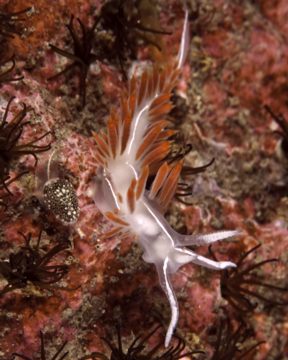 Compare the size Granulina margaritula to Flabellina verrucosa beside it in this photo.This “Three-lined” aeolid is seasonally abundant from Baja to Alaska (Behrens, 1991). Aeolids are opisthobranch gastropods known as sea slugs because they have lost their shells. This photo shows the nudibranch’s “oral tentacles” (bottom), ridged sensory antennae called “rhinophores”, “cerata” which contain stolen stinging cells for defense, and a “propodial tentacle”. This aeolid is common year-round at the Race Rocks Ecological Reserve where it is often observed feeding on hydroids such as Tubularia.
Compare the size Granulina margaritula to Flabellina verrucosa beside it in this photo.This “Three-lined” aeolid is seasonally abundant from Baja to Alaska (Behrens, 1991). Aeolids are opisthobranch gastropods known as sea slugs because they have lost their shells. This photo shows the nudibranch’s “oral tentacles” (bottom), ridged sensory antennae called “rhinophores”, “cerata” which contain stolen stinging cells for defense, and a “propodial tentacle”. This aeolid is common year-round at the Race Rocks Ecological Reserve where it is often observed feeding on hydroids such as Tubularia.
Macro images by Ryan Murphy
| Other Members of the Phylum Echinodermata Mollusca at Race Rocks |
and Image File |
 The Race Rocks taxonomy is a collaborative venture originally started with the Biology and Environmental Systems students of Lester Pearson College UWC. It now also has contributions added by Faculty, Staff, Volunteers and Observers on the remote control webcams. January 2011, Ryan Murphy The Race Rocks taxonomy is a collaborative venture originally started with the Biology and Environmental Systems students of Lester Pearson College UWC. It now also has contributions added by Faculty, Staff, Volunteers and Observers on the remote control webcams. January 2011, Ryan Murphy
|
Cuthona divea
From Marine Life of the Pacific by Lamb and Hanby, we see that the rose-pink cuthona, or Correa’s aeolid Is a very bushy species,( living fro intertidal to 20 metres depth from BC to California. The first three rows of cerata (gills) begin ahead of its rhinophores (sensory organs).It feeds on hydractinid hydroids whose color it closely matches. Macro image by Ryan Murphy
| Domain | Eukarya |
| Kingdom | Animalia |
| Phylum | Mollusca |
| Class | Gastropoda |
| Order | Nudibranchia |
| Family | Tergipedidae |
| Genus | Cuthona |
| Species | divae |
| Common Name: | Rose-pink Cuthona (Er.Marcus,1961 |
| Other Members of the Phylum Arthropoda at Race Rocks |
and Image File |
 The Race Rocks taxonomy is a collaborative venture originally started with the Biology and Environmental Systems students of Lester Pearson College UWC. It now also has contributions added by Faculty, Staff, Volunteers and Observers on the remote control webcams. The Race Rocks taxonomy is a collaborative venture originally started with the Biology and Environmental Systems students of Lester Pearson College UWC. It now also has contributions added by Faculty, Staff, Volunteers and Observers on the remote control webcams.
January 2011 Garry Fletcher |
Ryan Murphy’s Photos of Race Rocks
The most impressive pictures taken at Race Rocks are surely those done by Ryan Murphy, a graduate of Lester Pearson College who served as Ecoguardian in 2008-2011.
Ryan’s Flickr site is certainly worth browsing as almost every facet of life at Race Rocks has been covered in very artistic photographic excellence. Check out the several albums on Race Rocks .
Limacea cockerelli: Race Rocks Taxonomy
This is a very small dorid nudibranch, 15 mm in length, with elongate orange-tipped club-shaped tubercles around dorsal margin. Rhinophores are bright red-orange.
We haven’t photographed this nudibranch before, but due to its small size it has probably been overlooked until now.
Domain Eukarya
Kingdom Animalia
Phylum Mollusca
Class Gastropoda
Order Opisthobranchia
Infraorder: Doridina
Family Triophidae
Genus Limacea
Species cockerelli
Common Name: Laila cockerelli (Macfarland,1905)
Dirona albolineata THE RACE ROCKS TAXONOMY
Domain Eukarya
Kingdom Animalia
Phylum Mollusca
Class Gastropoda
Subclass: Heterobranchia
Order Nudibranchia
Suborder: Cladobranchia
Family Dironidae
Genus Dirona
Species D.albolineata
MacFarland and Cockerell & Eliot, 1905)
Common Name: Alabaster Nudibranch
Other molluscs at Race Rocks
 The Race Rocks taxonomy is a collaborative venture originally started with the Biology and Environmental Systems students of Lester Pearson College UWC. It now also has contributions added by Faculty, Staff, Volunteers and Observers on the remote control webcams. The Race Rocks taxonomy is a collaborative venture originally started with the Biology and Environmental Systems students of Lester Pearson College UWC. It now also has contributions added by Faculty, Staff, Volunteers and Observers on the remote control webcams.
Garry Fletcher |
Diaulula odonoghuei: THE RACE ROCKS TAXONOMY
We had previously called this species D. sandiegensis, but we changed it because of this entry in Wikipedia Describing D.sandiegensis;”This nudibranch grows to about 100 mm (4″) in length. The background color can be white or any shade of yellow to a yellowish brown, and it has characteristic markings consisting of a few brown rings or irregular spots. Specimens with more numerous spots are Diaulula odonoghuei.” Wikipedia
Domain Eukarya
Kingdom Animalia
Phylum Mollusca
Class Gastropoda
Superfamily Doridoidea
Family Discodorididae
Genus Diaulula
Species D.odonoghuei
Common Name: The spotted leopard dorid
 The Race Rocks taxonomy is a collaborative venture originally started with the Biology and Environmental Systems students of Lester Pearson College UWC. It now also has contributions added by Faculty, Staff, Volunteers and Observers on the remote control webcams. The Race Rocks taxonomy is a collaborative venture originally started with the Biology and Environmental Systems students of Lester Pearson College UWC. It now also has contributions added by Faculty, Staff, Volunteers and Observers on the remote control webcams.
Garry Fletcher |

